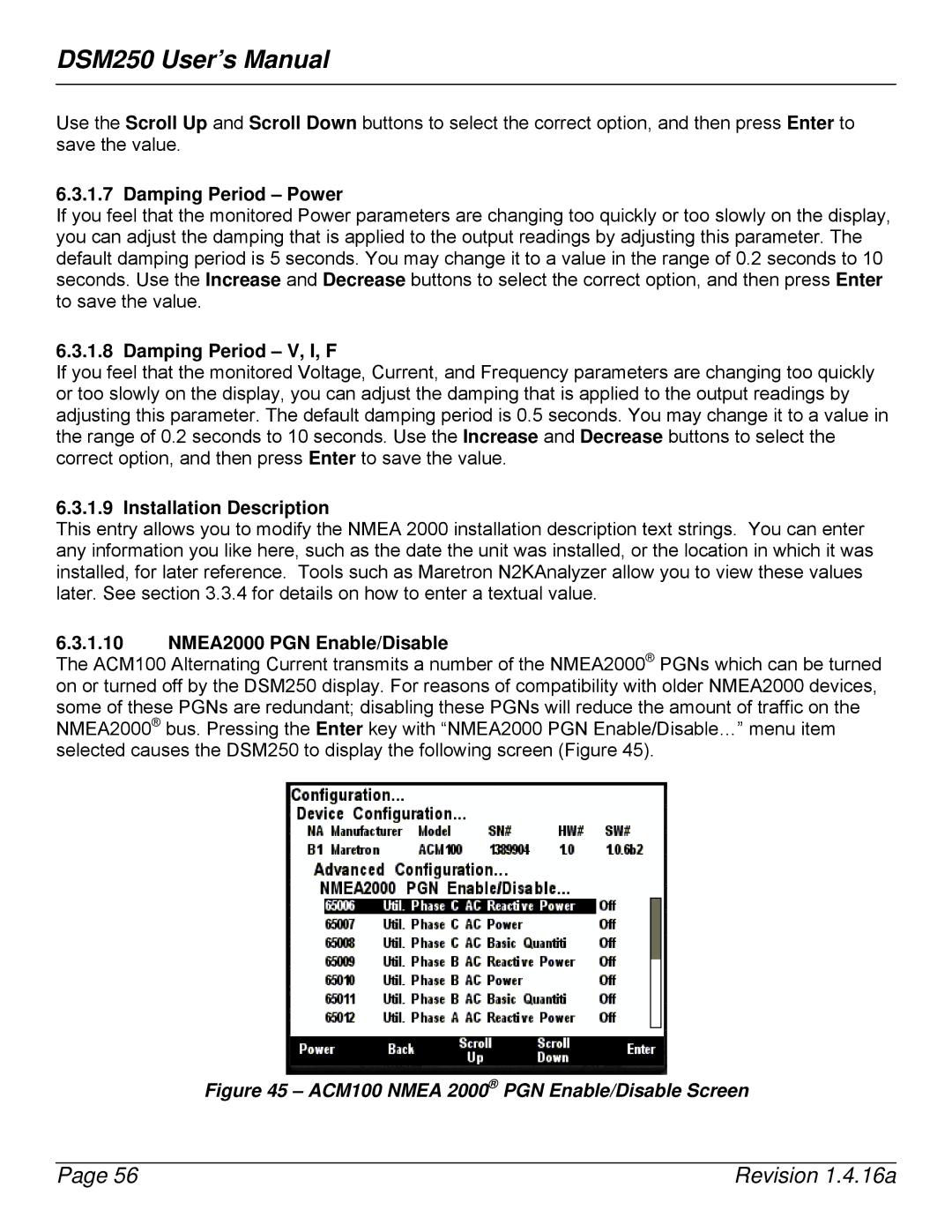
DSM250 User’s Manual
Use the Scroll Up and Scroll Down buttons to select the correct option, and then press Enter to save the value.
6.3.1.7 Damping Period – Power
If you feel that the monitored Power parameters are changing too quickly or too slowly on the display, you can adjust the damping that is applied to the output readings by adjusting this parameter. The default damping period is 5 seconds. You may change it to a value in the range of 0.2 seconds to 10 seconds. Use the Increase and Decrease buttons to select the correct option, and then press Enter to save the value.
6.3.1.8 Damping Period – V, I, F
If you feel that the monitored Voltage, Current, and Frequency parameters are changing too quickly or too slowly on the display, you can adjust the damping that is applied to the output readings by adjusting this parameter. The default damping period is 0.5 seconds. You may change it to a value in the range of 0.2 seconds to 10 seconds. Use the Increase and Decrease buttons to select the correct option, and then press Enter to save the value.
6.3.1.9 Installation Description
This entry allows you to modify the NMEA 2000 installation description text strings. You can enter any information you like here, such as the date the unit was installed, or the location in which it was installed, for later reference. Tools such as Maretron N2KAnalyzer allow you to view these values later. See section 3.3.4 for details on how to enter a textual value.
6.3.1.10NMEA2000 PGN Enable/Disable
The ACM100 Alternating Current transmits a number of the NMEA2000® PGNs which can be turned on or turned off by the DSM250 display. For reasons of compatibility with older NMEA2000 devices, some of these PGNs are redundant; disabling these PGNs will reduce the amount of traffic on the NMEA2000® bus. Pressing the Enter key with “NMEA2000 PGN Enable/Disable…” menu item selected causes the DSM250 to display the following screen (Figure 45).
Figure 45 – ACM100 NMEA 2000® PGN Enable/Disable Screen
Page 56 | Revision 1.4.16a |
